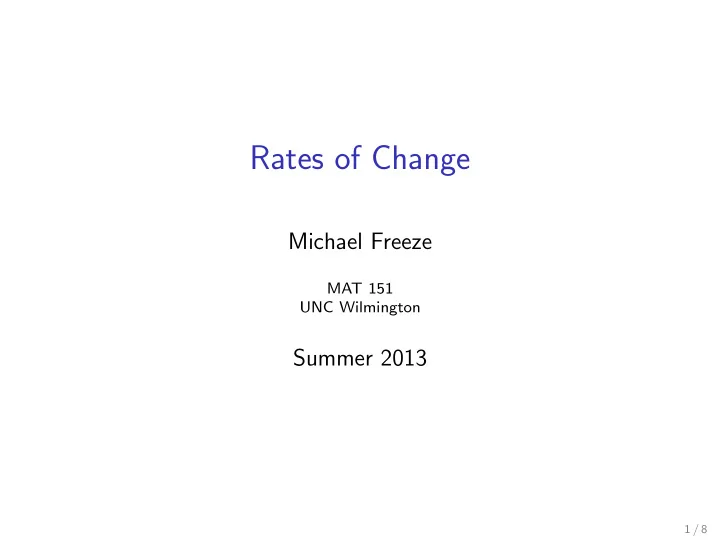

Rates of Change Michael Freeze MAT 151 UNC Wilmington Summer 2013 1 / 8
Section 3.3 :: Rates of Change 2 / 8
Marginal Revenue The revenue (in thousands of dollars) from producing x units of an item is R ( x ) = 10 x − 0 . 002 x 2 . (a) Find the average rate of change of revenue when production is increased from 1000 to 1001 units. 3 / 8
Marginal Revenue The revenue (in thousands of dollars) from producing x units of an item is R ( x ) = 10 x − 0 . 002 x 2 . (b) Find and interpret the instantaneous rate of change of revenue with respect to the number of items produced when 1000 units are produced. (This number is called the marginal revenue at x = 1000.) 4 / 8
Marginal Revenue The revenue (in thousands of dollars) from producing x units of an item is R ( x ) = 10 x − 0 . 002 x 2 . (c) Find the additional revenue if production is increased from 1000 to 1001 units. 5 / 8
Marginal Revenue The revenue (in thousands of dollars) from producing x units of an item is R ( x ) = 10 x − 0 . 002 x 2 . (d) Compare your answers for parts a and c. What do you find? How do these answers compare with your answer to part b? 6 / 8
Flu Epidemic Epidemiologists in College Station, Texas, estimate that t days after the flu begins to spread in town, the percent of the population infected by the flu is approximated by p ( t ) = t 2 + t for 0 ≤ t ≤ 5. (a) Find the average rate of change of p with respect to t over the interval from 1 to 4 days. (b) Find and interpret the instantaneous rate of change of p with respect to t at t = 3. 7 / 8
Velocity The distance of a particle from some fixed point is given by s ( t ) = t 2 + 5 t + 2 , where t is time measured in seconds. Find the average velocity of the particle over the following intervals. (a) 4 to 6 seconds (b) 4 to 5 seconds (c) Find the instantaneous velocity of the particle when t = 4. 8 / 8
Recommend
More recommend